If you’re reading this, it’s likely that your outbound sales engine is broken.
If you’re leading growth marketing, revenue operations, or demand generation and…
- Hiring a gazillion SDRs
- Making them do manual work
- Getting exhausted by SDR turnover and training requirements
- Paying 6-7 figures for SDR salaries and overpriced sales tech like Zoominfo
You’re not alone. But you’re doing it wrong.
Today, you should be able to scale your best sales rep’s playbook to generate your full pipeline—with just one person and minimal tech budget.
How? Outbound sales automation. The rise of democratized data, web scraping, low code, and AI has unlocked a new era for sales.
Savvy companies are already generating more pipeline than you—powered by just one skilled outbound sales automation wizard.
In this piece, we’ll show you how to do it. First, we’ll show you the problems with the current status quo of SDR workflows, outbound campaigns, and expensive tech stacks.
Then, we’ll show you how to use outbound sales automation to transform your sales process, replacing most of the manual work your SDRs do with technology—to save their time for what’s most important.
A day in the life of the average SDR
Most teams’ sales prospecting processes look like this.
Your best rep, Bob, takes his time to research an account, find the perfect prospect, and craft an excellent email. Bob ends his day feeling proud of his work—and maybe even books a meeting or two.
The problem?
Bob can only get his message in front of a few dozen prospects per day on average… because the process is manual, tedious, and slow.
Here’s a day in his life:
- Wake up
- Sign on to LinkedIn
- Scroll through their news feed and leave some comments
- Run a few Sales Navigator searches
- Try to update their filter criteria over and over to find the results they want
- Manually comb through accounts and open each account to check their website
- If the website and LinkedIn profile look good, add the company to a Google sheet
- Comb through company LinkedIn pages to find the decision-makers
- Add decision-makers to a Google sheet
- Upload CSV to an enrichment tool for email and phone data
- Take 10 minutes to write an email (or drop them into a generic sequence)
When Bob is prospecting, he’s really doing manual research and data entry.
Your sales reps are over-qualified and over-paid virtual assistants who spend 80% of their day on web research and data entry.
Problems with manual SDR workflows
Manual prospecting will book you qualified meetings, but usually not at high enough volumes to hit your pipeline goals.
There are three main consequences:
- Slow outbound pipeline growth (linear, at best)
- High costs of sale
- Unhappy SDRs
Let’s explore each one.
#1: Slow outbound pipeline growth (linear, at best)
Scaling your SDR team means scaling your costs, but doesn’t always mean scaling profits.
Why? Say you’ve managed to find a solid outbound rep that’s booking meetings consistently. (Although hard to find, good SDRs do exist!)
You may want to scale outbound by hiring a gazillion more SDRs. If one rep books 20 meetings a month, two reps should book 40 meetings a month, right?
Wrong. Scaling outbound sales teams isn’t linear.
You can’t replicate the performance of your best rep: what makes one rep a high performer is different from the next rep.
It’s almost impossible to consistently hire solid sales reps. That’s why ⅔ of SDRs fail within their first three months.

The Pareto principle is at play: 80% of your pipeline comes from 20% of your reps. The other 80% aren’t doing much for your bottom line.
Even if you do find another solid sales rep, you’ll spend insane time and effort in reviewing resumes, interviewing, hiring, training, etc…especially considering you’ll likely need to make several hires before you find a good fit.
Most companies have to hire SDR managers to make up for the fact that most reps aren’t self-sufficient—costing you another full-time salary because your entire team of salaried reps isn’t self-sufficient.
#2: High cost of sale
What’s your cost of sale after all that effort hiring SDRs?
TLDR:
Unless you’re bringing in deals north of $50-$100k, the SDR math just doesn’t add up.
Even if you are closing larger deals, SDR teams are still huge cost centers, considering they can be largely automated with modern technology.
I’ll give you a generic example, but you’ll want to do the math on your own for your specific company. (SDR quotas and attainment vary widely from industry to industry and company to company.)
The average SDR quota is 19 meetings per month, but most SDRs only attain ~80% of quota.
That means most SDRs are setting around 15 meetings per month.
If 80% show up, that’s 12 held meetings a month (3 per week) and of those, probably 8-10 are qualified.
Of the qualified meetings you actually hold, maybe a few deals close if you’re lucky.
Considering the average SDR’s salary is around $60k/year, you’re paying ~$5k/month for 8-10 qualified opportunities and maybe 1-2 deals. This is not including payroll taxes or commissions.
That’s $625 per opportunity, and $3,125 for a customer if you have a 20% close rate.

With a $10k ACV, that’s already a 31.25% cost of sale, not including your AEs’ salary, commissions, etch expenses, etc. It adds up.
#3: SDRs hate manual work, too
SDR automation is actually good for SDRs.
I’m a former sales rep. I’ve spent years building manual outreach lists for my own agency, my clients, as a sales rep at another agency, and as a founding SDR at a seed stage startup.
Manual outreach, day after day, wears you down. It’s incredibly taxing on your emotional health. You’re doing the same grindy work every day. I often had stomach cramps from the self-imposed pressure to perform and fear of failure.
The worst part is, after putting in so much manual labor to build lists and reach out, I couldn’t control if I booked a meeting or not.
Many reps share similar experiences…this work is draining for their soul. (Check out this LinkedIn post as an example.)
Automating the SDR job eliminates some of the most arduous grunt work in sales. When you stop making SDRs do manual research and data entry, you empower them to take discovery calls and filter for qualified opportunities.
And it’s great for AE’s! In the current system, AEs often have to take a bunch of discovery calls and waste time on bad prospects. But SDR automation protects AE’s calendars from taking unqualified meetings.

Problems with the average outbound sales campaign
Why is the average sales outbound campaign so generic and spammy?
When sales teams need to scale, they often remove research and personalization from their process….and outbound turns into spam.
#1: Terrible, unqualified list-building
Your list is your strategy. You have to take the time to put together a solid list. It doesn’t matter what tech stack you’re using or even how well-written or creative your email script is if you’re not sending your message to the right people.
Unless you deeply research your prospects, you’re going to end up with garbage, unqualified leads. Even those who do—miraculously—respond likely won’t move to qualified pipeline stages.
Most people do list research in a few ways:
- Filter by a generic industry or company size: broad and inaccurate.
- Buy lists from a data provider like ZoomInfo without further manual research: VERY inaccurate
- Manual research by SDRs: very expensive
- VA agencies: Worse than SDRs, slow, and expensive
The solution is automation.
#2: Generic, irrelevant email messages
When people try to reduce manual research, they often start blasting generic emails to thousands of people (mostly outside your ICP).
That, my friends, is not called automation. It’s called nuking the quality of your sales pipeline into orbit and killing your brand’s reputation with generic, irrelevant emails.
You don’t respond to any of the bad cold emails that land in your inbox, so why would your prospects?!
Think about your own inbox. You have two types of emails:
- Obviously personal
- Obviously spam
When you open your inbox, what do you do?
You look at all the emails and bulk delete any emails that look like marketing emails, sales emails, or spam. Then, you open the important emails and glance at them for seconds before deciding if you want to read them.
Anyone who opens a generic sales email automatically can see it’s spammy.
As clever as you think you are, sending “Hey John, I see you’ve been the Director of Marketing | B2B at AMAZON, INC” is a dead giveaway.
It’s obvious that you pulled a huge list from Zoominfo, put a few mail merge tags in a sequence without cleaning your data, and blasted out to 10k people.
If you didn’t take the time to do your research and send someone a proper, thoughtful, handwritten note, why would they take the time to respond?
Sales managers always preach “personalization, personalization, personalization!”
But they always settle for less because more quota demands more pipeline.
Instead of working smarter, managers say “work harder”—which means use higher volume at the cost of quality.
Outreach to meeting book rates plummet, there are high no-show rates, and prospects that do show up aren’t qualified. But managers have to show pipeline to their boss so they don’t get fired, and the cycle continues with a common refrain: “Okay, let’s go hire some more SDRs!”
This is not a good solution.
Problems with sales tech stacks
Most outbound sales teams’ tech stacks are expensive and outdated.
Teams spend $50k-$100k a year on data providers, $40k a year on their sales engagement platform, $20k a year on LinkedIn Sales Navigator, etc.

Leading data platforms are falling behind, both in terms of their tech and pricing model. ZoomInfo, for example, makes you sign 1-year minimums to onboard and sometimes multi-year contracts.
You’re shelling out 5-6 figures over several years for data platforms that are poor at giving you accurate search results.
These platforms make you sign egregious annual deals, spending multiple five if not six figures on outdated tech that you can’t get out of for at least a year, sometimes multiple years…
You don’t need to spend hundreds of thousands of dollars a year on multiple data platforms to maximize coverage. Many of these outdated sequencing tools are only still in business because old corporate executives know other old executives at Outreach or Salesloft.
#1: Signing annual deals with multiple data providers to maximize coverage
Access to accurate data is a massive challenge for outbound sales teams. If your outbound motion is driven by cold calling, for example, you’re basically doomed in most markets unless your sales team is armed with accurate mobile phone numbers. Otherwise, they’ll be calling dead-end company lines, stuck on hold, trying to get past decision makers, and leaving voicemails.
Unfortunately, accurate mobile data is hard to come by these days. Seamless.AI, for example, is one of the leading mobile data providers on the market. After extensive testing, I found only 17% of the numbers in their system are accurate. I tested Lusha as well, and found ~26% of their numbers were accurate. In both cases, ~75% of the data I found on these mobile number providers was inaccurate. And that’s only counting the data that was in the system. Plenty of prospects I wanted to reach didn’t have mobile numbers.
For example, out of 100 prospects in Seamless, only ~70 even had any mobile numbers in the system. Of those with mobiles in the system, 17% of the mobiles were accurate. Seamless gives you multiple numbers to try, (2.5 on average). 2.5 numbers per prospect x 17% accuracy = 42.5% of the prospects in Seamless with numbers had an accurate number. However, that’s only 42% of the 70% who were in the system. That’s only 29.4% of all prospects in Seamless with an accurate mobile number.
That means if a sales rep wants to contact 100 people, he can only get accurate mobiles for about 30 of them.
That rep will have a 10% connect rate if he’s lucky, so if 30/100 people he researched in Seamless have numbers, only 3/100 actually have a conversation with him.
Only 20% of those people book a meeting as well… you can see how lack of data is a challenge.
To solve this challenge, many companies end up buying several data platforms, signing multiple annual deals and shelling out tens if not hundreds of thousands of dollars, hoping platform B covers the data platform A was missing.

#2: Using outdated Sales Engagement Platforms
You’re overpaying for your sales engagement platform. Outreach and Salesloft charge $1k+ per seat per year. If your sales team is over 10 reps, you’re looking at a 5-figure investment. Unfortunately, those platforms aren’t up to date with outbound best practices.
For example, you have to manually reach out to Outreach to have them add a new burner domain for your outbound motion. Most people just use their primary company domain, which is a great way to have your domain blacklisted and your client emails landing in spam. Have fun explaining that to them.
Best practice to protect your domain and scale outreach is setting up many “burner domains”. They’re variants of your primary domain that have email addresses. Each inbox looks like a real rep on your team, with a profile picture and signature. The domain itself redirects to your primary domain, so as far as a prospect is concerned, there’s no difference.
But if you want to scale outreach without going to spam, this is the best way. You should only be sending 20-30 emails per day per domain to stay out of spam. It’s also important to use lots of unique text in your emails as well.
If you only have 1 email hooked up to Outreach, for example, you’re limited to 20-30 emails per day. This is fine if you’re using sales reps, as they can’t send much more than that each day anyway… but you still run the risk of having your domain flagged as spam. Unfortunately, with modern outbound technology + Clay, it’s now possible to send hundreds if not thousands of emails a day that are totally unique and personalized, without a single rep… This is where platforms like Outreach break down.
Compared to Instantly and Smartlead, Outreach and Salesloft don’t even come close for cold email. Both platforms are around $100/month, and are totally month to month. For that small price, you can easily add as many emails as you want.
I have clients with 40 domains hooked up to Instantly at once. They can send 1200 emails per day, only sending 30 per domain per day. One domain sends an email, then the next domain sends an email, etc. Each domain only sends 30 per day, spread out across the entire day, which looks like normal use and doesn’t get flagged as spam. But combined together, we’re sending 1k+ emails per day, with high reply rates of 5-10% and lots of meetings.

All replies return to a unified inbox, where a single salesperson can manage replies and book meetings. What used to take an army of sales reps, can be accomplished with Clay, several burner domains, and one person to man the unified inbox to convert replies into meetings.
All without signing a single long-term contract.
How SDR automation works for outbound sales
To succeed in outbound, you need to get the right message in front of the right person at the right time. And with quotas rising, you need to do this all the time—more than possible with reps sending manual emails.
What if I told you that you can generate more pipeline than your entire SDR team—without sinking 7 figures into a team or 6 figures into overpriced sales tech?
You can scale your best sales rep’s performance exponentially without hiring a single person. The modern outbound motion harnesses the power of your best sales rep’s manually researched and handwritten cold emails—with automation.
With Clay, you can eliminate all of the manual work and scale the same targeted message you used to spend 10 minutes crafting in a fraction of the time for a fraction of the cost. Let’s get to it.
Clever Lead Generation
Your list is your strategy. Why are you reaching out to this specific prospect? Why now?
Building a list of the right people who have your problem is the key to a solid outbound sales strategy.
There are tons of signs and signals - symptoms of pain - on the internet, but it was historically impossible for your team to have access to this data since it was so hard to obtain manually.
For example, scrape job boards and look for roles posted by ICP accounts that could suggest they’re trying to solve the pain your solution solves. Take it one step further and scrape the job responsibility text for a clever ChatGPT prompt that can tell you the main problems the org is solving with the hire. Then, decide if those problems line up with your value props, and if so, create a relevant cold email, targeted to the right person in the org, mentioning the problems they must have based on their job description, and how your solution solves those problems.
Another example is reviews. You can scrape G2 reviews to see if a company has the problem you solve. Then, reach out to the right person at the org, armed with the intel from the review. You can even monitor these accounts on a regular basis and trigger outreach the moment a poor review aligned with your value prop is published.
Democratized Data
Another benefit of Clay is the democratization of data and the ability to “waterfall” providers to find the best data for the lowest cost.
Clay buys data from 50+ data providers in bulk, and passes the discounts from economies of scale on to their customers… both in terms of the price per unit of data, along with the fact that you don’t have to sign an annual agreement with Clay, and you get access to all of their data. This allows you to “waterfall” data providers, which essentially means checking one provider, and moving on to another provider if your first choice doesn't return the information you’re looking for. This way, you can maximize data coverage while minimizing spend. It’s a revolutionary democratization of data that’s putting the behemoth data providers into question, as their value proposition has been significantly diminished.

Automate Manual research
Clay helps you automate manual research that used to be done manually. Aside from scraping data like employee count, you can also automate sales research that used to be done manually.
For example, let’s say you sell to other SaaS companies. There’s no proper “SaaS” industry category on a number of data providers. Computer Software, Advertising Services, etc.
Reps would do their best to filter down the list, but they’d still have to manually open each account’s profile and/or check their website to confirm the account is a SaaS company.
Now, you can scrape a company page or website home page and feed it to ChatGPT for it to confirm the specific company type. You can train the AI model to be as specific as you want. You can filter by SaaS companies, or sales tech, or cold email tech, etc. All without hiring a salesperson.
Instead of doing account research manually, you can enrich accounts/prospects with tech stack, job openings, website traffic, headcount growth, new roles, keywords on the website, and then use GPT to infer information about the account or prospect. Better yet, you can use Claygent to automate any manual research your sales team does today with Google. Claygent combines Google search, web scraping, and ChatGPT to automate manual research. You can answer questions about accounts for less than a penny per account with insanely accurate results. Check out this post to see how.
Frankly, the power of Claygent is scary… Now that you have rock-solid lead lists, your script writes itself. After all, your list is your strategy. Bad lists go nowhere in outbound sales… but with Clay, you can create lists of your dream prospects with a fraction of the time, effort, and money you used to need for the same outcome.
Personalization at Scale (For Real)
Personalization was traditionally left up to individual SDR/BDR talent. SDRs/BDRs had to manually look up each prospect and write personalized copy by hand. Since every person’s writing ability and wittiness is different, it was nearly impossible to achieve congruency across the whole team. 20% of your outbound team did a solid job, and the rest were playing catch-up. Even the top producers had limited bandwidth since they only had so many hours daily. Now, 90% of that process is accelerated with AI.
Sure, you don’t want to fully automate the entire thing. Asking GPT to write your entire cold email for you will still end in disaster. If your prospects can tell your email was written with GPT (which is easy when you write the entire email with GPT), you’re in trouble.
But with clever data and prompting abilities, you can segment your lists such that your message comes across 1-1. On top of that, clever GPT prompts used to normalize data and injected in bite-sized chunks in a cold email can make a world of difference.
For example, instead of saying “It looks like you live in Austin, Texas, United States”, you can use GPT to turn their profile's tagged location into a standard location name (the way locals would refer to the place.) In this case, “Looks like you live in the Austin area.”
Much more normal. Simple tweak but it makes a huge difference. The average sentence is the difference between your email being obviously spam and written just for them. The only way to get a response from a prospect is to fall into the written just for their category.
AI That Works Well
Clay’s AI wins by a mile compared to any other AI outbound sales automation tool… but not because Clay’s AI is better. Clay uses the same AI as everyone else (OpenAI). Clay wins, however, because Clay lets you do more with AI. Clay can apply AI on a granular, row-by-row basis.
AI is only as clever as the prompt and inputs given to the AI. When you click “write a cold email to a sales manager with AI”, your output is still generic and spam. A prospect receiving a generic email written by AI will probably respond less often than a generic email sent by a rep.
Where Clay’s AI shines, however, is the ability to engineer insane prompts and fuel those prompts with data at an insanely granular level for every prospect. For example, you can scrape a prospect and then pass the profile into ChatGPt as input. Then you can figure out anything you want about the prospect, like something unique about them that they’d be complimented for at a dinner party. Then, you can use that output to fuel another prompt, coming up with a funny mug or t-shirt idea for a prospect based on that unique thing about them to weave into your cold outreach.
- AI personalized gifting at scale
- Accurate, fast, and cheap account research
- Normalize data that’d otherwise be a “dead giveaway”
Automatic Enrichments
Uploading and downloading CSVs from 6+ data providers just to get someone’s email or phone number is garbage.
Clay can automatically and seamlessly pull information from 50+ data providers natively in the platform and scrape their website, then infer information about an account with ChatGPT.
Any app not natively integrated with Clay can easily be connected via Zapier.
On top of that, you can turn the wealth of data you have into brilliant, relevant, and personalized cold emails that look handwritten. The use cases here are endless.
Scale Outbound Sales for a Fraction of The Cost Using Automation
Compared to a salesperson, sending emails with Clay is far cheaper.
It takes a sales rep 10 minutes to research an account, find the right prospect, and craft a handwritten cold email (I timed it.)
That means if your rep worked 8 hours a day, non-stop, they could send 48 solid cold emails.
With the average BDR salary weighing in at $60k/year (not including commissions or payroll taxes), you’re paying $240 in salary costs per day. That’s $5 per cold email.

Unfortunately, sales reps probably don’t even send 48 emails per day…
Sales reps aren’t at their desk all day. They go for lunch. They call their friends. They check social media. They even take naps…
Compared to Clay, you’re probably paying $.05 to $.10 per email, maybe $.20 for the most complicated tables. That’s 25-100x cheaper than a salesperson per email.
Further, Clay can send virtually unlimited emails per day, whereas you’re lucky if your rep sends 50.
Combine the cost savings with the added scale, and the difference in pipeline/cost of sale is astonishing.
Dream Outbound Sales Automation Stack for Modern Sales Teams
For an in-depth guide on the dream outbound sales automation stack, see our guide (coming soon).
In the meantime, here’s the tech you need to succeed:
- Clay (automate enrichment, research, and personalization)
- Instantly/Smartlead (scale sequencing without hitting spam)
- OpenAI (ChatGPT is insanely useful in Clay. Grab an API key.)
- Apollo: (Great data platform to build raw source lists for further refinement in Clay)
- NeverBounce (verify email deliverability to keep bounce rates low and deliverability high)
- Salesforce/HubSpot (CRM)
Some crazy plays that are possible...
My agency, Sculpted, is a done-for-you Clay consulting service. We run outbound campaigns for clients like Sendoso, Goldcast, Tango, and more.
Here’s an example play we ran for Sendoso.
Overview: Sendoso is a direct mail gifting platform that helps teams automate sending, so they can focus on building stronger relationships and more pipeline. Sendoso wanted to scale outbound pipeline without scaling SDR headcount, so they turned to Sculpted for help. Together, we crafted a variety of outbound campaigns.
Play: We scraped prospects’ profiles and used ChatGPT to find something unique about them. Then, we sent them custom mug images with “punny lines” based on their unique thing, offering the mug in exchange for a meeting. Then, we found a top rated restaurant on Yelp near them, and linked to the Yelp page, offering a gift card in exchange for a meeting. Each email was pitching Sendoso’s value proposition, while demonstrating the value proposition in the email itself. In just over a month we’ve booked 60 meetings, generated 12 opps, and closed a deal. There are still tons of scheduled meetings upcoming as well, and we’re just getting started!
If you’re reading this, it’s likely that your outbound sales engine is broken.
If you’re leading growth marketing, revenue operations, or demand generation and…
- Hiring a gazillion SDRs
- Making them do manual work
- Getting exhausted by SDR turnover and training requirements
- Paying 6-7 figures for SDR salaries and overpriced sales tech like Zoominfo
You’re not alone. But you’re doing it wrong.
Today, you should be able to scale your best sales rep’s playbook to generate your full pipeline—with just one person and minimal tech budget.
How? Outbound sales automation. The rise of democratized data, web scraping, low code, and AI has unlocked a new era for sales.
Savvy companies are already generating more pipeline than you—powered by just one skilled outbound sales automation wizard.
In this piece, we’ll show you how to do it. First, we’ll show you the problems with the current status quo of SDR workflows, outbound campaigns, and expensive tech stacks.
Then, we’ll show you how to use outbound sales automation to transform your sales process, replacing most of the manual work your SDRs do with technology—to save their time for what’s most important.
A day in the life of the average SDR
Most teams’ sales prospecting processes look like this.
Your best rep, Bob, takes his time to research an account, find the perfect prospect, and craft an excellent email. Bob ends his day feeling proud of his work—and maybe even books a meeting or two.
The problem?
Bob can only get his message in front of a few dozen prospects per day on average… because the process is manual, tedious, and slow.
Here’s a day in his life:
- Wake up
- Sign on to LinkedIn
- Scroll through their news feed and leave some comments
- Run a few Sales Navigator searches
- Try to update their filter criteria over and over to find the results they want
- Manually comb through accounts and open each account to check their website
- If the website and LinkedIn profile look good, add the company to a Google sheet
- Comb through company LinkedIn pages to find the decision-makers
- Add decision-makers to a Google sheet
- Upload CSV to an enrichment tool for email and phone data
- Take 10 minutes to write an email (or drop them into a generic sequence)
When Bob is prospecting, he’s really doing manual research and data entry.
Your sales reps are over-qualified and over-paid virtual assistants who spend 80% of their day on web research and data entry.
Problems with manual SDR workflows
Manual prospecting will book you qualified meetings, but usually not at high enough volumes to hit your pipeline goals.
There are three main consequences:
- Slow outbound pipeline growth (linear, at best)
- High costs of sale
- Unhappy SDRs
Let’s explore each one.
#1: Slow outbound pipeline growth (linear, at best)
Scaling your SDR team means scaling your costs, but doesn’t always mean scaling profits.
Why? Say you’ve managed to find a solid outbound rep that’s booking meetings consistently. (Although hard to find, good SDRs do exist!)
You may want to scale outbound by hiring a gazillion more SDRs. If one rep books 20 meetings a month, two reps should book 40 meetings a month, right?
Wrong. Scaling outbound sales teams isn’t linear.
You can’t replicate the performance of your best rep: what makes one rep a high performer is different from the next rep.
It’s almost impossible to consistently hire solid sales reps. That’s why ⅔ of SDRs fail within their first three months.

The Pareto principle is at play: 80% of your pipeline comes from 20% of your reps. The other 80% aren’t doing much for your bottom line.
Even if you do find another solid sales rep, you’ll spend insane time and effort in reviewing resumes, interviewing, hiring, training, etc…especially considering you’ll likely need to make several hires before you find a good fit.
Most companies have to hire SDR managers to make up for the fact that most reps aren’t self-sufficient—costing you another full-time salary because your entire team of salaried reps isn’t self-sufficient.
#2: High cost of sale
What’s your cost of sale after all that effort hiring SDRs?
TLDR:
Unless you’re bringing in deals north of $50-$100k, the SDR math just doesn’t add up.
Even if you are closing larger deals, SDR teams are still huge cost centers, considering they can be largely automated with modern technology.
I’ll give you a generic example, but you’ll want to do the math on your own for your specific company. (SDR quotas and attainment vary widely from industry to industry and company to company.)
The average SDR quota is 19 meetings per month, but most SDRs only attain ~80% of quota.
That means most SDRs are setting around 15 meetings per month.
If 80% show up, that’s 12 held meetings a month (3 per week) and of those, probably 8-10 are qualified.
Of the qualified meetings you actually hold, maybe a few deals close if you’re lucky.
Considering the average SDR’s salary is around $60k/year, you’re paying ~$5k/month for 8-10 qualified opportunities and maybe 1-2 deals. This is not including payroll taxes or commissions.
That’s $625 per opportunity, and $3,125 for a customer if you have a 20% close rate.

With a $10k ACV, that’s already a 31.25% cost of sale, not including your AEs’ salary, commissions, etch expenses, etc. It adds up.
#3: SDRs hate manual work, too
SDR automation is actually good for SDRs.
I’m a former sales rep. I’ve spent years building manual outreach lists for my own agency, my clients, as a sales rep at another agency, and as a founding SDR at a seed stage startup.
Manual outreach, day after day, wears you down. It’s incredibly taxing on your emotional health. You’re doing the same grindy work every day. I often had stomach cramps from the self-imposed pressure to perform and fear of failure.
The worst part is, after putting in so much manual labor to build lists and reach out, I couldn’t control if I booked a meeting or not.
Many reps share similar experiences…this work is draining for their soul. (Check out this LinkedIn post as an example.)
Automating the SDR job eliminates some of the most arduous grunt work in sales. When you stop making SDRs do manual research and data entry, you empower them to take discovery calls and filter for qualified opportunities.
And it’s great for AE’s! In the current system, AEs often have to take a bunch of discovery calls and waste time on bad prospects. But SDR automation protects AE’s calendars from taking unqualified meetings.

Problems with the average outbound sales campaign
Why is the average sales outbound campaign so generic and spammy?
When sales teams need to scale, they often remove research and personalization from their process….and outbound turns into spam.
#1: Terrible, unqualified list-building
Your list is your strategy. You have to take the time to put together a solid list. It doesn’t matter what tech stack you’re using or even how well-written or creative your email script is if you’re not sending your message to the right people.
Unless you deeply research your prospects, you’re going to end up with garbage, unqualified leads. Even those who do—miraculously—respond likely won’t move to qualified pipeline stages.
Most people do list research in a few ways:
- Filter by a generic industry or company size: broad and inaccurate.
- Buy lists from a data provider like ZoomInfo without further manual research: VERY inaccurate
- Manual research by SDRs: very expensive
- VA agencies: Worse than SDRs, slow, and expensive
The solution is automation.
#2: Generic, irrelevant email messages
When people try to reduce manual research, they often start blasting generic emails to thousands of people (mostly outside your ICP).
That, my friends, is not called automation. It’s called nuking the quality of your sales pipeline into orbit and killing your brand’s reputation with generic, irrelevant emails.
You don’t respond to any of the bad cold emails that land in your inbox, so why would your prospects?!
Think about your own inbox. You have two types of emails:
- Obviously personal
- Obviously spam
When you open your inbox, what do you do?
You look at all the emails and bulk delete any emails that look like marketing emails, sales emails, or spam. Then, you open the important emails and glance at them for seconds before deciding if you want to read them.
Anyone who opens a generic sales email automatically can see it’s spammy.
As clever as you think you are, sending “Hey John, I see you’ve been the Director of Marketing | B2B at AMAZON, INC” is a dead giveaway.
It’s obvious that you pulled a huge list from Zoominfo, put a few mail merge tags in a sequence without cleaning your data, and blasted out to 10k people.
If you didn’t take the time to do your research and send someone a proper, thoughtful, handwritten note, why would they take the time to respond?
Sales managers always preach “personalization, personalization, personalization!”
But they always settle for less because more quota demands more pipeline.
Instead of working smarter, managers say “work harder”—which means use higher volume at the cost of quality.
Outreach to meeting book rates plummet, there are high no-show rates, and prospects that do show up aren’t qualified. But managers have to show pipeline to their boss so they don’t get fired, and the cycle continues with a common refrain: “Okay, let’s go hire some more SDRs!”
This is not a good solution.
Problems with sales tech stacks
Most outbound sales teams’ tech stacks are expensive and outdated.
Teams spend $50k-$100k a year on data providers, $40k a year on their sales engagement platform, $20k a year on LinkedIn Sales Navigator, etc.

Leading data platforms are falling behind, both in terms of their tech and pricing model. ZoomInfo, for example, makes you sign 1-year minimums to onboard and sometimes multi-year contracts.
You’re shelling out 5-6 figures over several years for data platforms that are poor at giving you accurate search results.
These platforms make you sign egregious annual deals, spending multiple five if not six figures on outdated tech that you can’t get out of for at least a year, sometimes multiple years…
You don’t need to spend hundreds of thousands of dollars a year on multiple data platforms to maximize coverage. Many of these outdated sequencing tools are only still in business because old corporate executives know other old executives at Outreach or Salesloft.
#1: Signing annual deals with multiple data providers to maximize coverage
Access to accurate data is a massive challenge for outbound sales teams. If your outbound motion is driven by cold calling, for example, you’re basically doomed in most markets unless your sales team is armed with accurate mobile phone numbers. Otherwise, they’ll be calling dead-end company lines, stuck on hold, trying to get past decision makers, and leaving voicemails.
Unfortunately, accurate mobile data is hard to come by these days. Seamless.AI, for example, is one of the leading mobile data providers on the market. After extensive testing, I found only 17% of the numbers in their system are accurate. I tested Lusha as well, and found ~26% of their numbers were accurate. In both cases, ~75% of the data I found on these mobile number providers was inaccurate. And that’s only counting the data that was in the system. Plenty of prospects I wanted to reach didn’t have mobile numbers.
For example, out of 100 prospects in Seamless, only ~70 even had any mobile numbers in the system. Of those with mobiles in the system, 17% of the mobiles were accurate. Seamless gives you multiple numbers to try, (2.5 on average). 2.5 numbers per prospect x 17% accuracy = 42.5% of the prospects in Seamless with numbers had an accurate number. However, that’s only 42% of the 70% who were in the system. That’s only 29.4% of all prospects in Seamless with an accurate mobile number.
That means if a sales rep wants to contact 100 people, he can only get accurate mobiles for about 30 of them.
That rep will have a 10% connect rate if he’s lucky, so if 30/100 people he researched in Seamless have numbers, only 3/100 actually have a conversation with him.
Only 20% of those people book a meeting as well… you can see how lack of data is a challenge.
To solve this challenge, many companies end up buying several data platforms, signing multiple annual deals and shelling out tens if not hundreds of thousands of dollars, hoping platform B covers the data platform A was missing.

#2: Using outdated Sales Engagement Platforms
You’re overpaying for your sales engagement platform. Outreach and Salesloft charge $1k+ per seat per year. If your sales team is over 10 reps, you’re looking at a 5-figure investment. Unfortunately, those platforms aren’t up to date with outbound best practices.
For example, you have to manually reach out to Outreach to have them add a new burner domain for your outbound motion. Most people just use their primary company domain, which is a great way to have your domain blacklisted and your client emails landing in spam. Have fun explaining that to them.
Best practice to protect your domain and scale outreach is setting up many “burner domains”. They’re variants of your primary domain that have email addresses. Each inbox looks like a real rep on your team, with a profile picture and signature. The domain itself redirects to your primary domain, so as far as a prospect is concerned, there’s no difference.
But if you want to scale outreach without going to spam, this is the best way. You should only be sending 20-30 emails per day per domain to stay out of spam. It’s also important to use lots of unique text in your emails as well.
If you only have 1 email hooked up to Outreach, for example, you’re limited to 20-30 emails per day. This is fine if you’re using sales reps, as they can’t send much more than that each day anyway… but you still run the risk of having your domain flagged as spam. Unfortunately, with modern outbound technology + Clay, it’s now possible to send hundreds if not thousands of emails a day that are totally unique and personalized, without a single rep… This is where platforms like Outreach break down.
Compared to Instantly and Smartlead, Outreach and Salesloft don’t even come close for cold email. Both platforms are around $100/month, and are totally month to month. For that small price, you can easily add as many emails as you want.
I have clients with 40 domains hooked up to Instantly at once. They can send 1200 emails per day, only sending 30 per domain per day. One domain sends an email, then the next domain sends an email, etc. Each domain only sends 30 per day, spread out across the entire day, which looks like normal use and doesn’t get flagged as spam. But combined together, we’re sending 1k+ emails per day, with high reply rates of 5-10% and lots of meetings.

All replies return to a unified inbox, where a single salesperson can manage replies and book meetings. What used to take an army of sales reps, can be accomplished with Clay, several burner domains, and one person to man the unified inbox to convert replies into meetings.
All without signing a single long-term contract.
How SDR automation works for outbound sales
To succeed in outbound, you need to get the right message in front of the right person at the right time. And with quotas rising, you need to do this all the time—more than possible with reps sending manual emails.
What if I told you that you can generate more pipeline than your entire SDR team—without sinking 7 figures into a team or 6 figures into overpriced sales tech?
You can scale your best sales rep’s performance exponentially without hiring a single person. The modern outbound motion harnesses the power of your best sales rep’s manually researched and handwritten cold emails—with automation.
With Clay, you can eliminate all of the manual work and scale the same targeted message you used to spend 10 minutes crafting in a fraction of the time for a fraction of the cost. Let’s get to it.
Clever Lead Generation
Your list is your strategy. Why are you reaching out to this specific prospect? Why now?
Building a list of the right people who have your problem is the key to a solid outbound sales strategy.
There are tons of signs and signals - symptoms of pain - on the internet, but it was historically impossible for your team to have access to this data since it was so hard to obtain manually.
For example, scrape job boards and look for roles posted by ICP accounts that could suggest they’re trying to solve the pain your solution solves. Take it one step further and scrape the job responsibility text for a clever ChatGPT prompt that can tell you the main problems the org is solving with the hire. Then, decide if those problems line up with your value props, and if so, create a relevant cold email, targeted to the right person in the org, mentioning the problems they must have based on their job description, and how your solution solves those problems.
Another example is reviews. You can scrape G2 reviews to see if a company has the problem you solve. Then, reach out to the right person at the org, armed with the intel from the review. You can even monitor these accounts on a regular basis and trigger outreach the moment a poor review aligned with your value prop is published.
Democratized Data
Another benefit of Clay is the democratization of data and the ability to “waterfall” providers to find the best data for the lowest cost.
Clay buys data from 50+ data providers in bulk, and passes the discounts from economies of scale on to their customers… both in terms of the price per unit of data, along with the fact that you don’t have to sign an annual agreement with Clay, and you get access to all of their data. This allows you to “waterfall” data providers, which essentially means checking one provider, and moving on to another provider if your first choice doesn't return the information you’re looking for. This way, you can maximize data coverage while minimizing spend. It’s a revolutionary democratization of data that’s putting the behemoth data providers into question, as their value proposition has been significantly diminished.

Automate Manual research
Clay helps you automate manual research that used to be done manually. Aside from scraping data like employee count, you can also automate sales research that used to be done manually.
For example, let’s say you sell to other SaaS companies. There’s no proper “SaaS” industry category on a number of data providers. Computer Software, Advertising Services, etc.
Reps would do their best to filter down the list, but they’d still have to manually open each account’s profile and/or check their website to confirm the account is a SaaS company.
Now, you can scrape a company page or website home page and feed it to ChatGPT for it to confirm the specific company type. You can train the AI model to be as specific as you want. You can filter by SaaS companies, or sales tech, or cold email tech, etc. All without hiring a salesperson.
Instead of doing account research manually, you can enrich accounts/prospects with tech stack, job openings, website traffic, headcount growth, new roles, keywords on the website, and then use GPT to infer information about the account or prospect. Better yet, you can use Claygent to automate any manual research your sales team does today with Google. Claygent combines Google search, web scraping, and ChatGPT to automate manual research. You can answer questions about accounts for less than a penny per account with insanely accurate results. Check out this post to see how.
Frankly, the power of Claygent is scary… Now that you have rock-solid lead lists, your script writes itself. After all, your list is your strategy. Bad lists go nowhere in outbound sales… but with Clay, you can create lists of your dream prospects with a fraction of the time, effort, and money you used to need for the same outcome.
Personalization at Scale (For Real)
Personalization was traditionally left up to individual SDR/BDR talent. SDRs/BDRs had to manually look up each prospect and write personalized copy by hand. Since every person’s writing ability and wittiness is different, it was nearly impossible to achieve congruency across the whole team. 20% of your outbound team did a solid job, and the rest were playing catch-up. Even the top producers had limited bandwidth since they only had so many hours daily. Now, 90% of that process is accelerated with AI.
Sure, you don’t want to fully automate the entire thing. Asking GPT to write your entire cold email for you will still end in disaster. If your prospects can tell your email was written with GPT (which is easy when you write the entire email with GPT), you’re in trouble.
But with clever data and prompting abilities, you can segment your lists such that your message comes across 1-1. On top of that, clever GPT prompts used to normalize data and injected in bite-sized chunks in a cold email can make a world of difference.
For example, instead of saying “It looks like you live in Austin, Texas, United States”, you can use GPT to turn their profile's tagged location into a standard location name (the way locals would refer to the place.) In this case, “Looks like you live in the Austin area.”
Much more normal. Simple tweak but it makes a huge difference. The average sentence is the difference between your email being obviously spam and written just for them. The only way to get a response from a prospect is to fall into the written just for their category.
AI That Works Well
Clay’s AI wins by a mile compared to any other AI outbound sales automation tool… but not because Clay’s AI is better. Clay uses the same AI as everyone else (OpenAI). Clay wins, however, because Clay lets you do more with AI. Clay can apply AI on a granular, row-by-row basis.
AI is only as clever as the prompt and inputs given to the AI. When you click “write a cold email to a sales manager with AI”, your output is still generic and spam. A prospect receiving a generic email written by AI will probably respond less often than a generic email sent by a rep.
Where Clay’s AI shines, however, is the ability to engineer insane prompts and fuel those prompts with data at an insanely granular level for every prospect. For example, you can scrape a prospect and then pass the profile into ChatGPt as input. Then you can figure out anything you want about the prospect, like something unique about them that they’d be complimented for at a dinner party. Then, you can use that output to fuel another prompt, coming up with a funny mug or t-shirt idea for a prospect based on that unique thing about them to weave into your cold outreach.
- AI personalized gifting at scale
- Accurate, fast, and cheap account research
- Normalize data that’d otherwise be a “dead giveaway”
Automatic Enrichments
Uploading and downloading CSVs from 6+ data providers just to get someone’s email or phone number is garbage.
Clay can automatically and seamlessly pull information from 50+ data providers natively in the platform and scrape their website, then infer information about an account with ChatGPT.
Any app not natively integrated with Clay can easily be connected via Zapier.
On top of that, you can turn the wealth of data you have into brilliant, relevant, and personalized cold emails that look handwritten. The use cases here are endless.
Scale Outbound Sales for a Fraction of The Cost Using Automation
Compared to a salesperson, sending emails with Clay is far cheaper.
It takes a sales rep 10 minutes to research an account, find the right prospect, and craft a handwritten cold email (I timed it.)
That means if your rep worked 8 hours a day, non-stop, they could send 48 solid cold emails.
With the average BDR salary weighing in at $60k/year (not including commissions or payroll taxes), you’re paying $240 in salary costs per day. That’s $5 per cold email.

Unfortunately, sales reps probably don’t even send 48 emails per day…
Sales reps aren’t at their desk all day. They go for lunch. They call their friends. They check social media. They even take naps…
Compared to Clay, you’re probably paying $.05 to $.10 per email, maybe $.20 for the most complicated tables. That’s 25-100x cheaper than a salesperson per email.
Further, Clay can send virtually unlimited emails per day, whereas you’re lucky if your rep sends 50.
Combine the cost savings with the added scale, and the difference in pipeline/cost of sale is astonishing.
Dream Outbound Sales Automation Stack for Modern Sales Teams
For an in-depth guide on the dream outbound sales automation stack, see our guide (coming soon).
In the meantime, here’s the tech you need to succeed:
- Clay (automate enrichment, research, and personalization)
- Instantly/Smartlead (scale sequencing without hitting spam)
- OpenAI (ChatGPT is insanely useful in Clay. Grab an API key.)
- Apollo: (Great data platform to build raw source lists for further refinement in Clay)
- NeverBounce (verify email deliverability to keep bounce rates low and deliverability high)
- Salesforce/HubSpot (CRM)
Some crazy plays that are possible...
My agency, Sculpted, is a done-for-you Clay consulting service. We run outbound campaigns for clients like Sendoso, Goldcast, Tango, and more.
Here’s an example play we ran for Sendoso.
Overview: Sendoso is a direct mail gifting platform that helps teams automate sending, so they can focus on building stronger relationships and more pipeline. Sendoso wanted to scale outbound pipeline without scaling SDR headcount, so they turned to Sculpted for help. Together, we crafted a variety of outbound campaigns.
Play: We scraped prospects’ profiles and used ChatGPT to find something unique about them. Then, we sent them custom mug images with “punny lines” based on their unique thing, offering the mug in exchange for a meeting. Then, we found a top rated restaurant on Yelp near them, and linked to the Yelp page, offering a gift card in exchange for a meeting. Each email was pitching Sendoso’s value proposition, while demonstrating the value proposition in the email itself. In just over a month we’ve booked 60 meetings, generated 12 opps, and closed a deal. There are still tons of scheduled meetings upcoming as well, and we’re just getting started!





















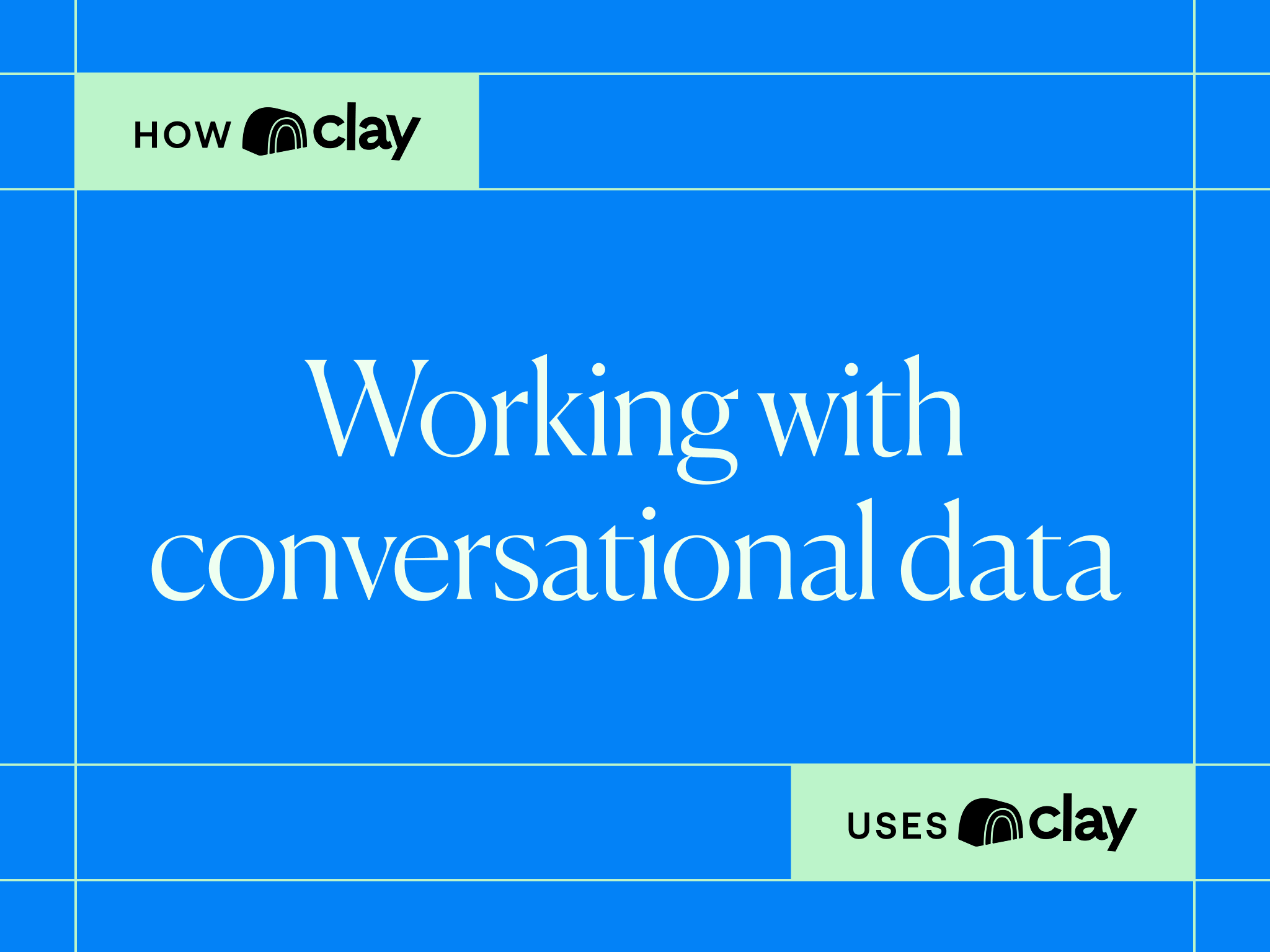
.png)


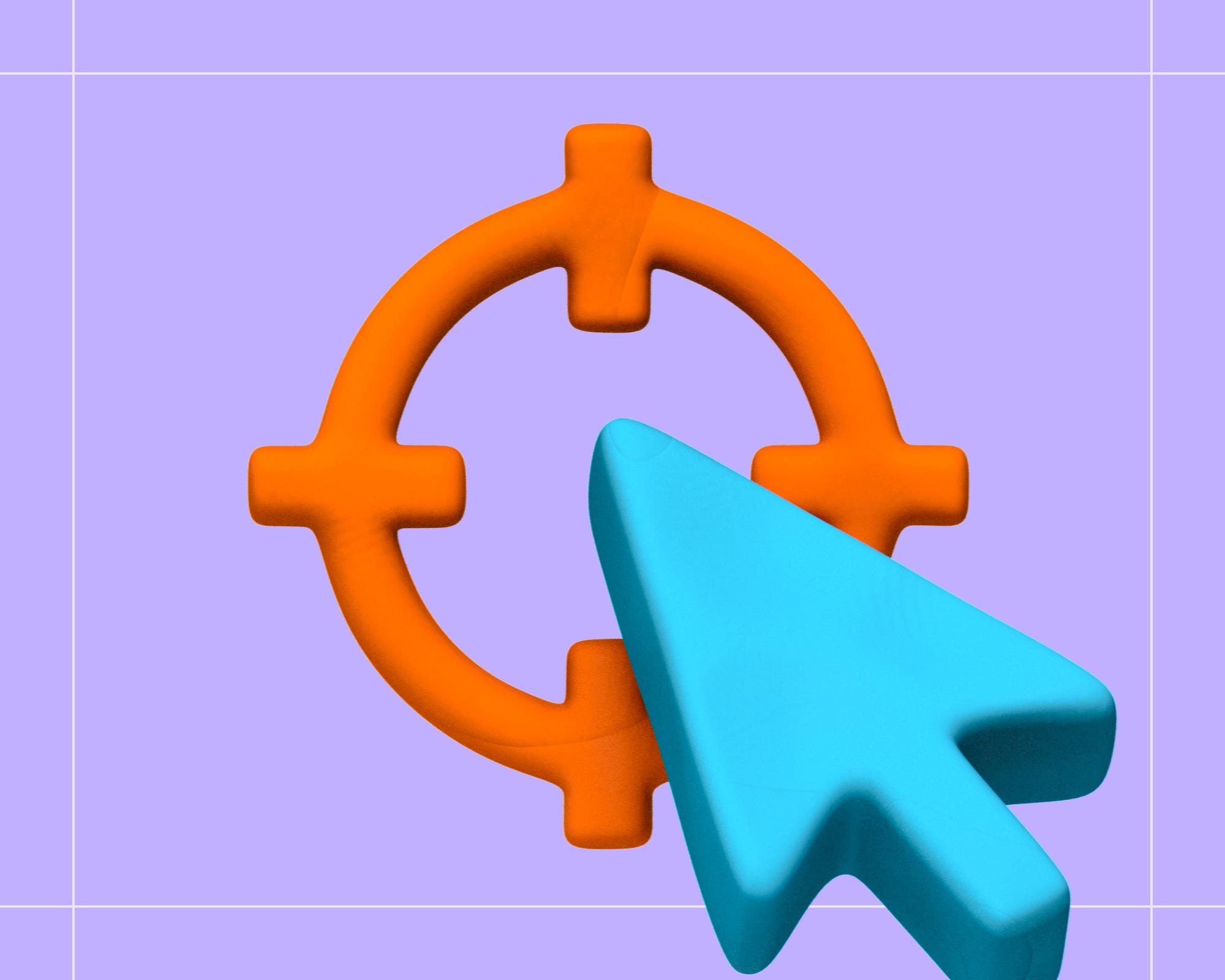
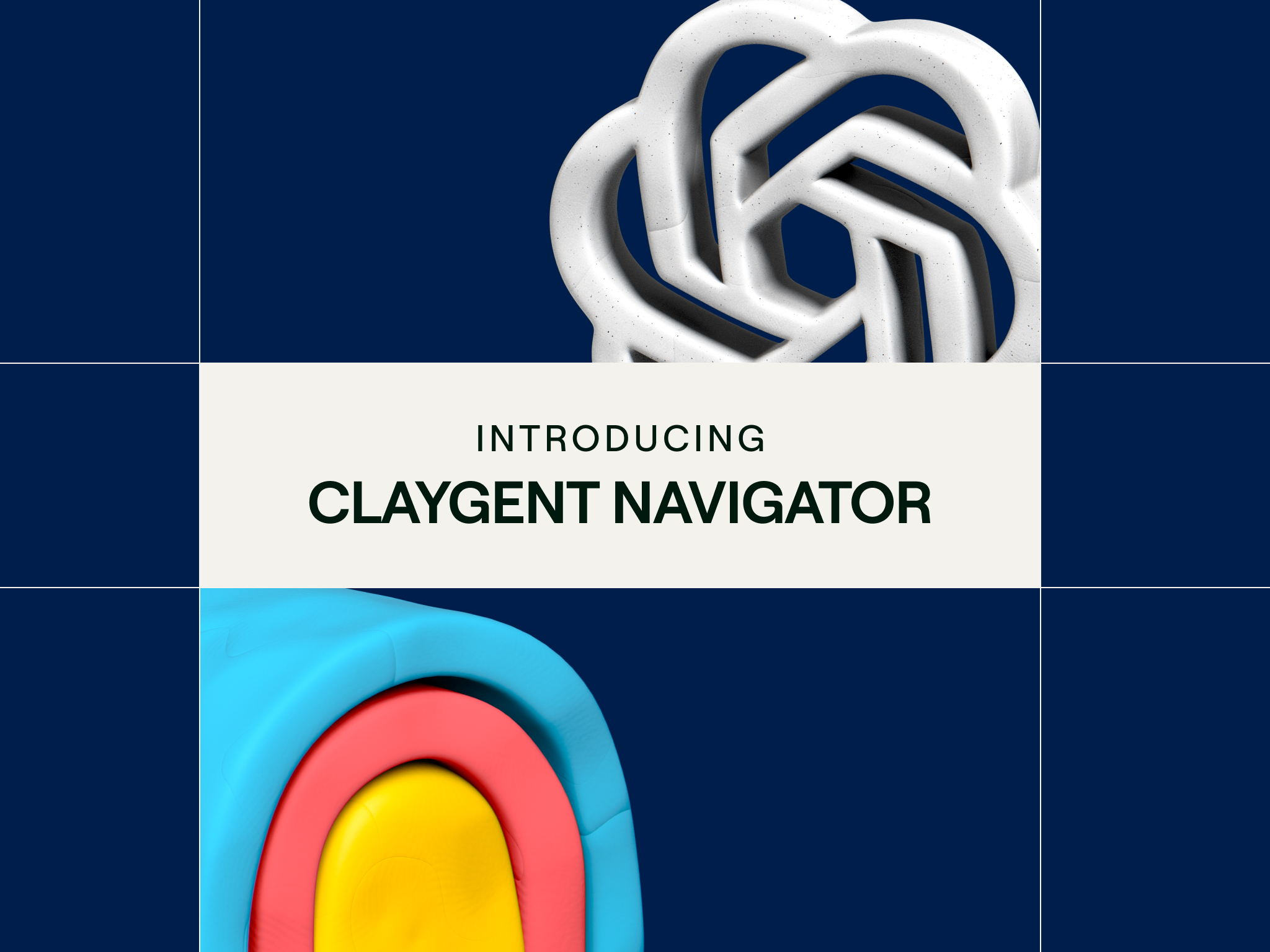
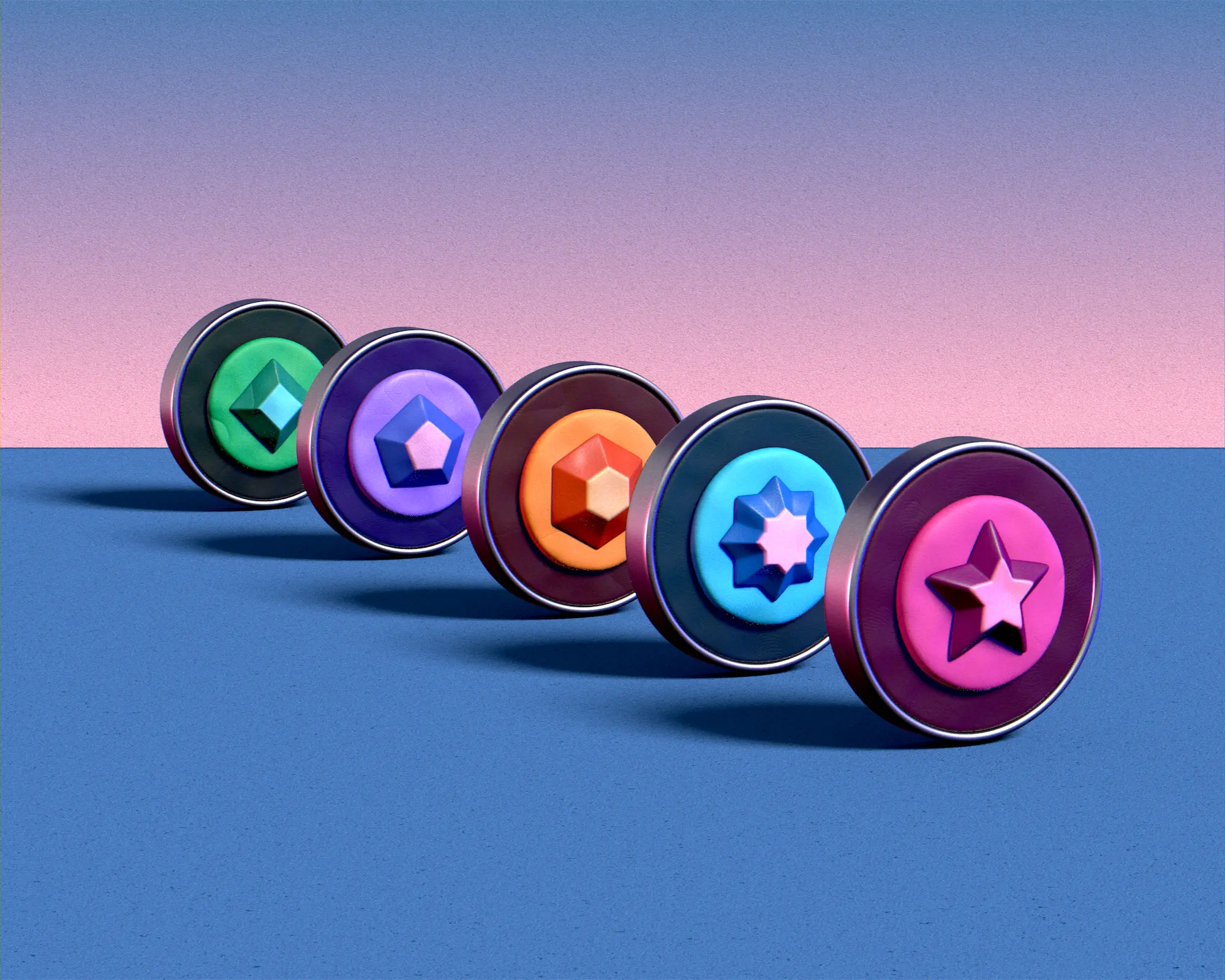




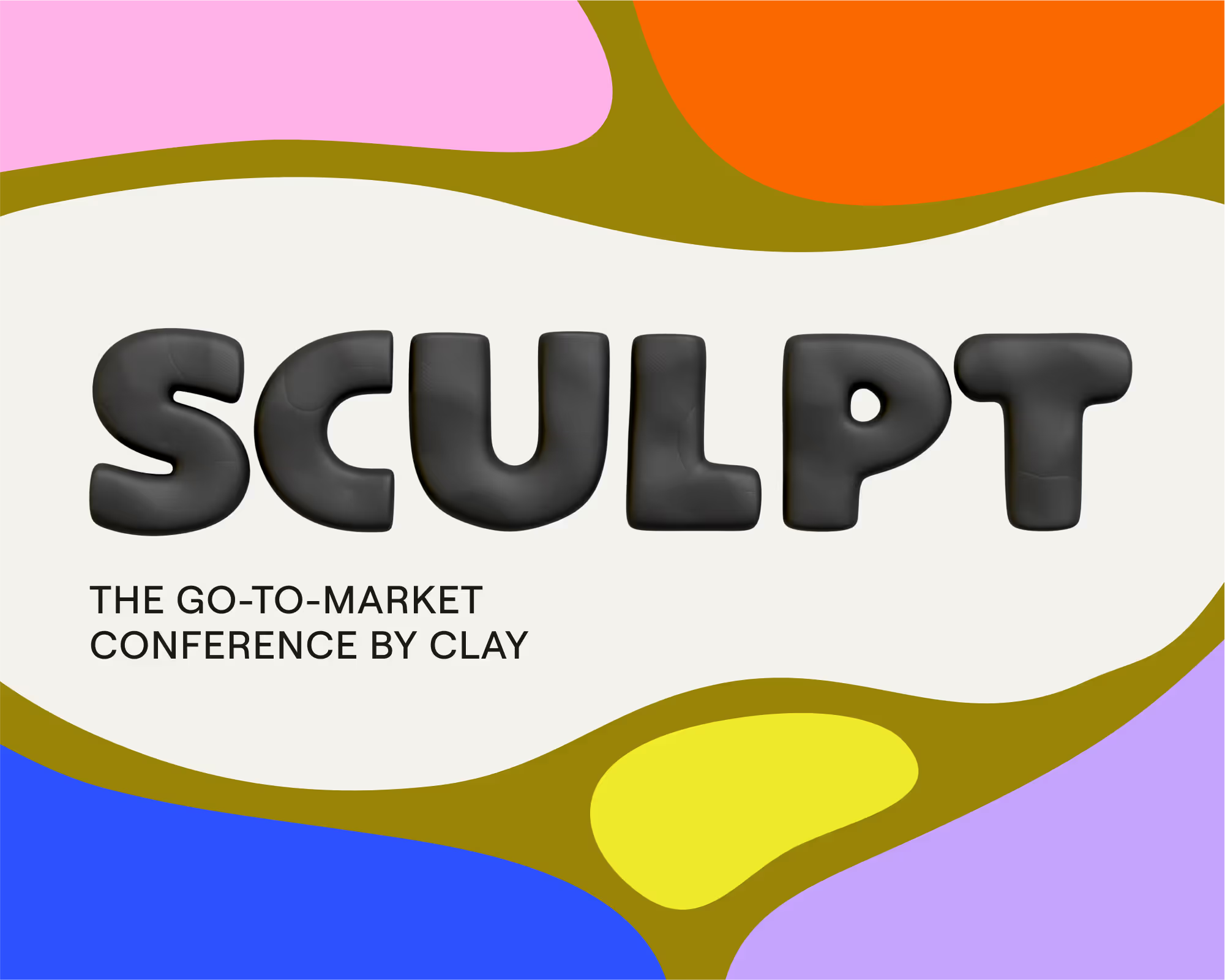
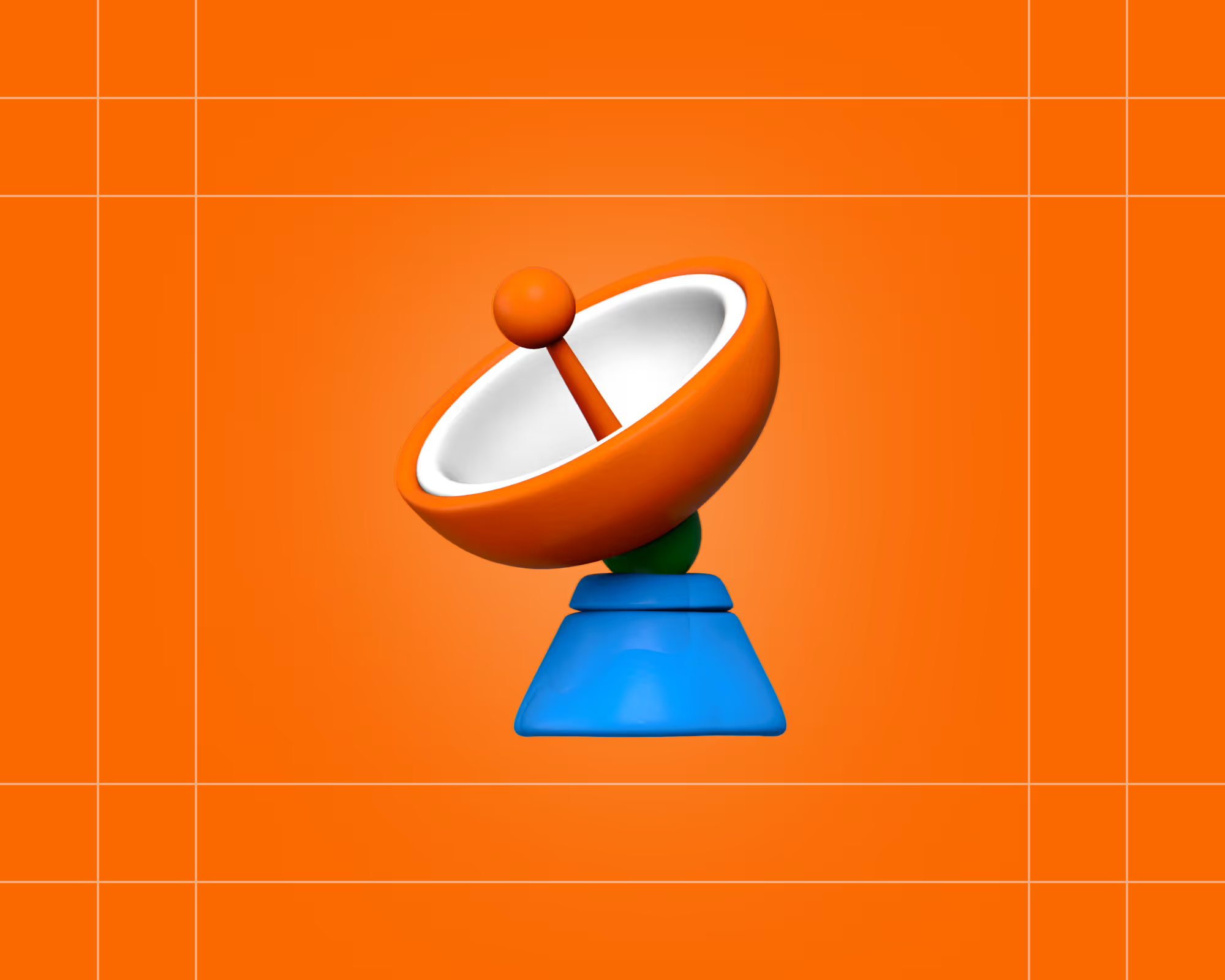

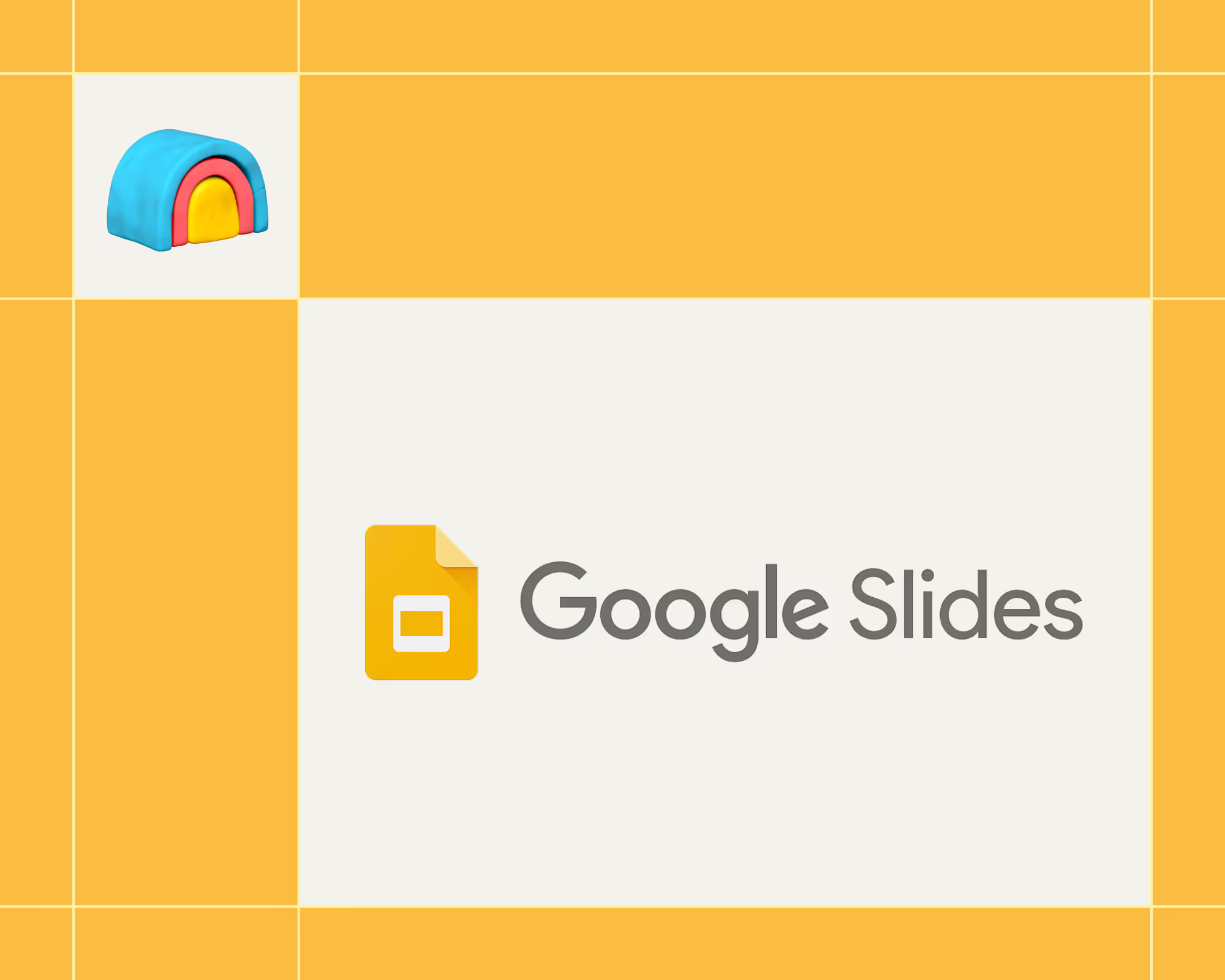
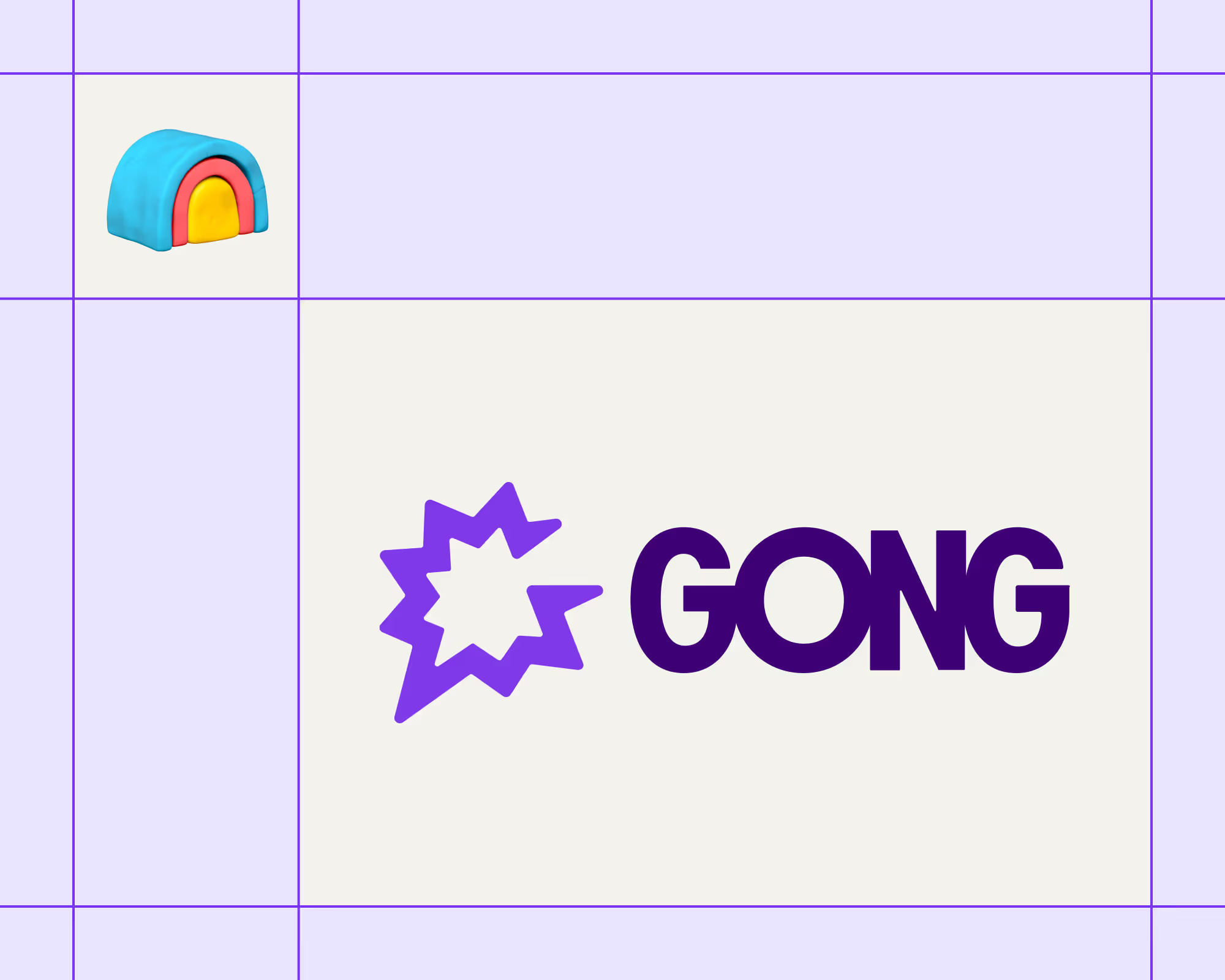

.avif)











.avif)
.avif)





















































